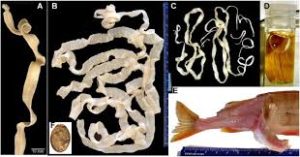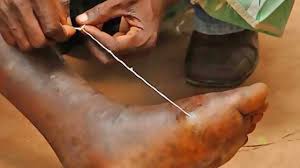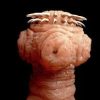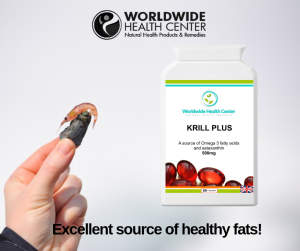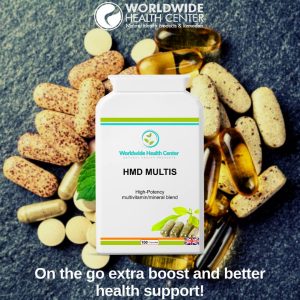Need help? Email us:
- AMINO ACIDS
- Antioxidants
- Blood Sugar Regulation
- Bone and Joint Repair
- BOOKS
- Brain Food & Energy Supplements
- Candida Support
- Cardiovascular Support
- Cholesterol
- Constipation Relief
- Dental Health
- Detox
- Digestive Support
- Eye Support
- Fatty Acids
- Gut Health
- Hair Mineral Analysis
- Heavy Metal Detox
- Herbal Tinctures
- Immune Support
- Liver Support
- METABOLIC TYPING
- Multivitamin & Mineral
- Natural antimicrobials and parasite remedies
- Natural Diuretic
- Probiotics
- Prostate Health
- Tachyon Products
- Uncategorized
- VITAMINS
- WEIGHT LOSS
NATURAL PARASITE DETOX
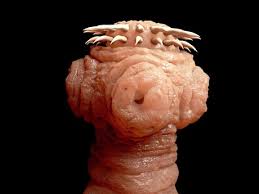
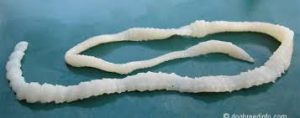 NATURAL PARASITE DETOX
NATURAL PARASITE DETOX
Parasites: the uninvited guests! This is a chapter from Dr George Georgiou’s book Why Am I Sick?, a Naturopath who is the Founder Director of the Da Vinci Holistic Health Center, in Larnaca, Cyprus explaining the natural parasite detox.
It always amuses me when I tell a patient that they are a suspect for parasites, based on their symptomatology and other screening tests. They are usually aghast with disgust at how ‘dirty’ they must be! Little do they know that they are in the majority, as it is estimated that about 90% of most populations in the Western world have some sort of parasites. So, what about you? Most people have some form of parasites, so using a natural parasite detox is important to help eliminate these pests.
I am including this chapter here as parasites can cause a lot of health problems and appear to be one of the underlying causes of many chronic degenerative diseases, including cancers, so a parasite detox is crucial to optimising health. My intention is not to discuss the details of parasitology, as that would require a book in itself – but to touch on the subject with some examples of the more common parasites, and end with some natural parasite detox remedies that will help to clear these parasites from the body. There are combinations of natural parasite detox remedies that can remove literally hundreds of parasites concomitantly – these are powerful combinations that have been tried and tested in clinical practice by many practitioners around the world for a natural parasite detox.
What is a parasite?
The word parasite comes from the Greek word para meaning ‘beside’ and sitos meaning ‘food.’ A parasite is any organism that derives its food, nutrition and shelter by living in or on another organism.[1]
Circulated worldwide, the Journal of the American Medical Association (JAMA) reported in 1984 that more than one-half of the 8.3 billion people on Earth were infected with parasitic disease. Parasites generally live and breed in the mucous layers of the body – there are over 100 kinds of parasites that can live in the human body.
All parasites generally prevent the absorption of nutrients from food and irritate the intestinal lining while entering the bloodstream, and causing toxicity in the body tissues.
In November 1993 the National Institute of Allergy and Infectious Disease (NIAID) reported that parasites in the US affect millions of Americans. The Centers for Disease Control (CDC) estimates that between 100,000 and 1,000.000 cases of Giardia lamblia occur each year. In the Spring of 1993, 100 people died and 400,000 became seriously ill because of contamination of the water supply in Milwaukee by the parasite Cryptosporidium. A nationwide survey by the CDC in 1976 estimated that one in every six people, selected at random, had one or more parasites.
One person can pass millions of Giardia lamblia cysts each day, and most infections probably result from ingestion of water or food contaminated with human sewage. Open sewers in city streets and contamination of drinking water with this sewage undoubtedly results in many infections.
Many cases of ‘travelers’ diarrhoea’ are caused by Giardia. Even in developed countries potable (drinking) water can be contaminated with small amounts of sewage, especially when septic systems are built too close to wells. Thus, it is not surprising that G. lamblia is found throughout the world. A natural parasite detox is crucial when travelling to such areas of the world.
Parasitic infections cause a tremendous burden of disease in both the tropics and subtropics as well as in more temperate climates. Of all parasitic diseases, malaria causes the most deaths globally. Malaria[2] kills approximately 1 million people each year, most of them young children in sub-Saharan Africa.
Nasty consequences!
Some parasitic worms have the ability to fool our bodies into thinking that they are a normal part of the tissues and organs – this tricks the immune system and prevents it from attacking these intruders. When parasites are established in our bodies, they do several things:[3]
- Some worm infections can cause physical trauma by perforating (burrowing) into the intestines, the circulatory system, the lungs, the liver and many other organs – this will make organs and tissues look like Emmental Cheese!
- They can block and damage certain organs by lumping together into balls – which can be mistaken for cancer tumours – they will travel into the brain, heart, lungs and other organs.
- They absorb nutrients such as vitamins and minerals; and amino acids needed for digestion. This can often lead to anaemia and cause drowsiness after meals.
- They excrete metabolic waste products (toxic waste) that poison our bodies. This particular condition is called Verminous Intoxification. This can overburden our detoxification systems leading to an accumulation of toxins that could open the door to more serious disease.
- Parasites can severely depress the immune system, opening more doors to the development of further degeneration, fatigue and illness.
- Parasites can destroy tissues and organs much faster than they can regenerate, leading to degeneration.
So who are these uninvited ‘guests?’
Just briefly, let us examine some of the more common parasites found in humans in order to get some idea of what we are up against. By no means is this a comprehensive coverage of the subject, just a brief glimpse into this fascinating world that lives inside most of us.
Parasites that live inside the body of the host are called endoparasites (e.g. hookworms, that live in the host’s gut), and those that live on the outside are called ectoparasites (e.g. fleas and mites).
Categories of parasites
Parasites are gener ally separated into different categories or groups as follows:
ally separated into different categories or groups as follows:
- Nematodes (Nematoda) include roundworms, pinworms and hookworms.
- Protozoa are single-celled organisms that include Toxoplasma, Giardia, Cryptosporidium and amoeba.
- Tapeworms (Cestoda).
- Flukes (Trematoda).
The most common gastrointestinal parasites are roundworms, pinworms and tapeworms – let us examine these in more detail and see how we can use a natural parasite detox to eliminate them.
Worms
Roundworms (Ascaris lumbricoides)
Roundworms[4] are the most common intestinal parasites in the world – they are more prevalent in tropical and subtropical areas, especially in Asian countries which practice crop fertilization with ‘night soil’ (raw human sewage). About 1 billion people are currently infected with this organism. This creature is spread directly to humans from soil or from food contaminated with faeces. Children are very prone to roundworm infection. These worms are mobile and can travel up into the liver, heart and lungs, growing up to 35 cm in length.[5]
People with this infection suffer from malnutrition due to competition for food and the inhibition of absorption of proteins, fats and carbohydrates; as well as diseases such as pneumonia, jaundice and seizures. Roundworms are diagnosed when their eggs are found in a stool specimen.[6]
Pinworms (Enterobius vermicularis)
This is one of the most common parasitic worms found in the Western, Industrialized World, and is particularly common in children. It is estimated that pinworms infect more than 10% of the population of North America and Europe. Pinworm infestation is picked up through contact with contaminated food, water, house dust, as well as through human contact.
Adult pinworms live in the large intestine (colon) and after copulation the male dies. The female moves outside the anus and lays her eggs on the perianal skin (a single female can produce more than 10,000 eggs), and they are then transferred from the itching anal area to the mouth. After laying the eggs the female also dies. In one month the egg has grown to a sexually mature worm. Adult pinworm head (left) and eggs (right)
Pinworms can quickly transmit to the entire family through the bathtub, toilet and bed clothes. Perianal itching is the most common symptom. A ten-year study of 2,000 cases of pinworm in children linked seemingly unrelated symptoms, i.e. epilepsy, hyperactivity and visual problems. The conventional treatment for pinworms is the prescription drug, Vermox, which is chewable.
People infected with pinworms:
- can be asymptomatic
- can have mild gastrointestinal upsets
- suffer from perianal itching
- may have behavioural changes
- can be restless and irritable
- can suffer with insomnia
- in women the pinworms can enter the vagina and cause additional irritation.
Pinworms are HIGHLY CONTAGIOUS. The eggs are infective within a few hours of being laid and can infest bed linen, clothing, carpets, hands and can cause nail biting.
Tapeworms (Taenia species)
There are several species of tapeworms (taenia)[7] that can live in the human body, usually derived from pork and beef, but also from fish and pets. Eating poorly cooked foods is one way of getting infected. Tapeworms can grow up to 7 meters long but they rarely cause symptoms, unless they grow very large and block the intestinal tract.
Tapeworms are found in three types of meats – each a different species and all treated the same. They are the beef tapeworm (Taenia saginata), pork tapeworm (Taenia solium) and fish tapeworm (Diphyllobothrium latum).
Despite its size – several feet in length, the beef tapeworm does not produce many symptoms. It thrives on carbohydrates consumed by its host, utilizing the tissue of its host for a source of protein. Thankfully, most beef tapeworms live a solitary life, but that life usually lasts twenty to twenty-five years. The common symptoms of this infection are diarrhoea, abdominal cramping, nervousness, nausea and loss of appetite.
The body is composed of successive segments (proglottids). The sum of the proglottids is called a strobila, which is thin, resembling a strip of tape, and is the source of the common name “tapeworm”. The worm’s scolex (“head”) attaches to the intestine of the definitive host. In some species, the scolex is dominated by bothria, which are sometimes called “sucking grooves”, and function like suction cups. Other species have hooks and suckers that aid in attachment.
The pork tapeworm is similar to the beef tapeworm, but shorter in size. These worms are typically transmitted to their human host through undercooked pork, such as fresh or smoked ham or sausage. These parasites usually produce multiple worms living in the same host. Immature larvae can migrate into the muscles, heart, eyes and brain.
The fish tapeworm is the largest parasite found in humans. Commonly found in Scandinavia, Russia, Japan, Australia, the Great Lakes of North America, Canada and Alaska, this parasite can be contracted by eating raw or lightly cooked freshwater or migratory fish. The list of fish includes Alaskan salmon, perch, pike, pickerel and American turbot. The most common symptoms are pain and fullness of the abdomen, nausea and anorexia. The most debilitating effect of this infection is a B12 deficiency or pernicious anemia.
Hookworms (Ancylostoma species)
Hookworms[8],[9] infect about 800,000.000 people as well as dogs and cats (domestic varieties). They live in the small intestine and produce 10,000 – 25,000 eggs per day. Their main source of food is their host’s blood.
Guinea worms (fiery serpent – dracunculus medinensis)
This is not only a parasite of the undeveloped countries – it has been mentioned by the ancient Greek, Roman and Arabic scholars. It is found mostly in carnivores and omnivores and can grow to over one metre in length – female worms are found just under the skin (most often in the legs, ankles, feet). If it is not able to escape and find its way to the skin, it will become encapsulated in tissues and joints, causing serious complications.
Heartworms (Dirofilaria immitis)
Though usually found only in dogs, they can also occur in humans. The adult worm is quite large and lives in the arteries of the body – often causing inflammation and thickening of the heart – resulting in respiratory insufficiency, a chronic cough and vomiting. Many species of mosquitoes serve as vectors.[10]
Warning signs of parasitic infestation
There are many different signs and symptoms of parasitic infestation – let us look at a few of the more common ones:
Constipation – some worms can physically obstruct certain organs. Blockage of the common bile duct in the gall bladder and the intestinal tract can make elimination infrequent and difficult.
Diarrhoea – some parasites, primarily protozoa, produce a prostaglandin that creates sodium and chloride loss that leads to frequent, watery stools.
Gas and bloating – some parasites live in the upper small intestine, where the inflammation they produce causes both gas and bloating. This problem worsens with the eating of hard-to-digest foods such as beans, raw fruits and raw vegetables. Persistent abdominal distension is a frequent sign of hidden invaders.
Irritable Bowel Syndrome (IBS) – parasites can irritate, inflame and coat the intestinal cell wall, leading to a variety of gastrointestinal symptoms and malabsorption of vital nutrients, particularly fatty substances. This malabsorption leads to bulky stools and excess fat in the faeces (steatorrhea).
Joint and muscle aches and pains – parasites can migrate and become enclosed in a sac (encysting) in joint fluids, and worms can encyst in the muscles. When this happens, pain becomes evident and is often assumed to be arthritis. Joint and muscle pain and inflammation are also the result of tissue damage caused by the body’s ongoing immune response.
Anaemia – some intestinal worms attach themselves to the mucosal lining of the intestines and leach nutrients from the human host. If they are present in large enough numbers, they can create enough blood loss to cause a type of iron deficiency.
Allergy – parasites can irritate and sometimes perforate the intestinal lining, increasing bowel permeability to large undigested molecules. This can activate the body’s immune response to produce increased levels of eosinophils. These eosinophils can inflame the body tissue, resulting in an allergic reaction.
Skin conditions – Intestinal worms can cause hives, rashes, eczema and other allergic-type skin reactions. Protozoa invasion can cause cutaneous ulcers, swelling and sores, papular lesions and dermatitis.
Granulomas – granulomas are tumour-like masses that encase destroyed larvae or parasitic eggs. They most often develop in the colon or rectal walls, but can also be found in the lungs, liver, peritoneum, and uterus.
Anxiety – metabolic waste and toxic substances from parasites can act as irritants to the central nervous system. Restlessness and anxiety are often the result of parasitic infestation.
Insomnia – awakening during the night, particularly between 2 and 4 a.m. are possibly caused by the body’s attempts to eliminate toxic wastes via the liver.
Teeth grinding (Bruxism) – has been observed in cases of parasitic infection. Most notable in sleeping children, this is thought to be a nervous response to a foreign irritant.
Chronic fatigue – tiredness, flu-like complaints, apathy, depression, impaired concentration and faulty memory may all be symptomatic of malnutrition. In the presence of a parasitic infection, malnutrition results from malabsorption of proteins, carbohydrate, fats and especially vitamins A and B12.
Immune dysfunction – parasites depress immune system function by decreasing the secretion of IgA. IgA deficiency results from low levels, or complete absence of immune globulin A, which causes decreased immune function in the mucosal surfaces (e.g. the mouth, gastrointestinal tract, and lungs) and results in an increased risk of respiratory and gastrointestinal infections. It is associated with autoimmune diseases. The presence of parasites continuously stimulates the immune response and eventually can exhaust it, leaving the body vulnerable to bacterial and viral infections.
Here is a summary table of some of the signs and symptoms that parasites can cause in people:
| Itchy ears and nose | Men: sexual dysfunction |
| Forgetfulness | Slow reflexes |
| Gas, bloating | Unclear thinking |
| Loss of appetite | Yellowish face |
| Rapid heartbeat | Heart pain |
| Pain in the navel | Eating more than normal and still feeling hungry |
| Blurry or unclear vision | Pain in the back, thighs, shoulders |
| Lethargy | Numb hands |
| Burning sensation in the stomach | Women: problems with menstrual cycle |
| Dry lips during the day | Damp lips at night |
| Drooling while sleeping | Grinding teeth while asleep |
| Bed wetting | Anal itching |
The signs of parasitic infection in humans
Children
If you suspect that your child has parasites and want to use a natural parasite detox, simply answer the questions below – the more questions you answer positively, the higher the chances that your child is infested with parasites:
- Does your child have dark circles under his eyes?
- Is your child hyperactive?
- Has you child been diagnosed with ‘failure to thrive’?
- Does your child grind or clench his teeth at night?
- Does your child constantly pick his nose or scratch his behind?
- Does your child have the habit of eating dirt?
- Does your child wet the bed?
- Is your child restless at night?
- Does your child cry often for no reason?
- Does your child tear his hair out?
- Does your child have a limp that orthopedic treatment has not helped?
- Does your child have a brassy, staccato-type cough?
- Does your child have convulsions or an abnormal electroencephalogram (EEG)?
- Does your child have recurring headaches?
- Is your child unusually sensitive to light and prone to eyelid twitching, blinking frequently, or squinting?
- Does your child have unusual tendencies to bleed in the gums, rectum, or nose?
Infants
- Does your baby have severe intermittent colic?
- Does your baby persistently bang his head against his crib?
- Is your baby a chronic crier?
- Does your baby have a blotchy rash around the perianal area?
Natural Parasite Detox
Due to the vast number of illnesses implicating parasites as the cause, a regular natural digestive detoxification program (including an anti-parasitic formula and colon cleanser to promote proper elimination), has been recommended by various naturopaths.
Ozone and parasites
One of the most effective treatments for a natural parasite detox in the large intestine is to cleanse the colon with ozonated water and hydrogen peroxide by colonic irrigation. This method is extremely lethal to all types of bad bacteria, food pathogens, parasites and viruses. As the colon becomes cleaner, the ozone and oxygen will reach other organs where parasites may be a problem.
Why does ozone work so well? Healthy cells and friendly bacteria are aerobic, which means they need oxygen to survive. Unhealthy cells, parasites, pathogens and viruses are anaerobic – they can only survive in a non-oxygenated environment. It makes more sense to change the living environment of the parasite by making it richer in oxygen, and cleaner – conditions that are not so favourable to most parasites if you wish to undergo a natural parasite detox.
Natural Supplements for Eliminating Parasites
Here are some of the supplements[11] that we recommend to our patients at the Da Vinci Holistic Health Center – the ULTIMATE LIVER DETOX PACK contains all that is required for supporting the liver:
HEPATO PLUS – this is a herbal combination, specifically designed to provide extra support to the detoxification organs and systems of the body – particularly during periods of over-indulgence in food, alcohol or smoking.
You can take one capsule x 3 times daily. Each capsule contains:
- Artichoke extract (40:1), 2.5% cynarin (equivalent to 4800mg of fresh artichoke)
- Parsley powder
- Beetroot extract (5:1) (equivalent to 400mg of fresh beetroot powder)
- Turmeric powder (95% Curcumin)
- Burdock root extract (5:1) (equivalent to 200mg of fresh burdock root)
- Fennel seed extract (4:1) (equivalent to 120mg of fresh fennel seed powder)
- Dandelion root extract (4:1) (equivalent to 100mg of fresh dandelion root powder)
- Liquorice root extract (5:1) (equivalent to 100mg of fresh liquorice)
- N-acetyl L-cysteine
- Alpha lipoic acid
- Garlic (black aged garlic) extract (100:1) (equivalent to 500mg of fresh garlic powder)
- Ginger root powder
- Cayenne (Capicum Frutescens) extract (8:1) (equivalent to 30mg of fresh cayenne powder)
If you are constipated, then parasites will have an ideal environment in which to reproduce, so clearing the constipation is very important. You can try our CONSTIPATION PACK which contains effective  supplements for getting the gut working again.
supplements for getting the gut working again.
Another herbal formula we use is called COLFORM. This is a fast-acting, herbal colon cleanser and bowel support formula with 10 active herbal ingredients, including glucomannan.
COLFORM is a well-known herbal colon cleanser and bowel support combination, based on a formula by American master herbalist, Dr. John R. Christopher.
You should take one capsule x 3 times daily. Each capsule contains:
- Rhubarb powder
- Barberry powder
- Burdock root powder
- Cayenne powder
- Ginger root powder
- Rhubarb root extract (30:1)
- Fennel seed powder
- Aloe vera extract (200:1)
- Clove bud powder
- Dandelion root extract (4:1)
Another herbal remedy called CONSTFORM, based on one of Dr. John R. Christopher’s formulas, is good to add when there has been a history of constipation. Parasite love the environment created by constipation, so to rid yourself of parasites, you also need to cure your constipation.
CONSTFORM is a fast-acting colon cleanser, designed for the chronically constipated in need of strong treatment for a blocked bowel.
You can take one capsule x 3 times daily. Each capsule contains: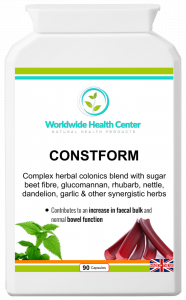
- Rhubarb powder
- Barberry powder
- Glucomannan 90%
- Alfalfa powder
- Cayenne powder
- Garlic powder
- Aloe vera extract (200:1)
- Dandelion root extract (4:1)
- Ginger root extract (20:1)
- Nettle leaf extract (4:1)
Another herbal formula that I recommend to my patients during the 15-day detox is called PARAFORM PLUS ONE. This one contains herbs that parasites do not like, so is designed to eliminate parasites from the intestine. A couple of times per year it is good to detox using these herbal formulas.
The ingredients have been hand-picked for their anti-parasitic, anti-bacterial, anti-microbial, anti-fungal and anti-viral activities.
Each capsule contains:
- Magnesium caprylate – 175 mg

- Cinnamon powder – 100 mg
- Cloves powder – 100 mg
- Shiitake mushroom powder – 100 mg
- Garlic powder extract (10000mg/g) – 75 mg
- Glucomannan (95%) – 50 mg
- Pumpkin seed P E 4:1 (40%) (equivalent to 200 mg pumpkin seed powder) – 50 mg
- Chicory root P.E 4:1 (equivalent to 120mg chicory root powder) – 30 mg
- Grapefruit seed P.E 5:1 (equivalent to 100mg grapefruit seed powder) – 20 mg
- Cayenne extract 7:1 (equivalent to 100mg cayenne powder) – 3 mg
- Fenugreek seed P.E 4:1 (equivalent to 48mg fenugreek seed powder) – 12 mg
- Olive leaf extract 15:1, 6% Oleurpein (equivalent to 50mg olive leaf powder) – 35 mg
Flatworms, roundworms, protozoa, even bacteria and viruses are remarkably easy to kill using this herbal programme.
Homeopathic remedies for a natural parasite detox
These are certain homeopathic medicines that can be taken concomitantly with the herbal formulae – these have a more specific action depending on the parasite being targeted, for a natural parasite detox such as:
| ASCARIDES | TAPEWORM | HOOKWORM | PINWORM | THREADWORMS | OTHERS |
| Sabadilla – 30 C potency (3 x daily) | Cuprum metallicum – 3 C potency (3 x daily) | Thymol – 6 C potency (3 x daily) | Teucrium 30 C potency (3 x daily) | Santonium 30 C potency (3 x daily) | Cina 3 C potency (3x daily) |
| Spigelia – 30 C potency (3 x daily) | Felix mas – 3 C potency (3 x daily) | ||||
| Teucrium – 30 C potency (3 x daily) | |||||
| Santonium – 30 C potency (3 x daily) |
Additional remedies for a natural parasite detox
Grapefruit Seed Extract is effective in destroying parasites and may be taken internally – two tabs, three times daily. The liquid can also used to wash raw fruits and vegetables before eating.
Cayenne, garlic, and turmeric all support proper immune system function and help destroy some worms. Garlic has a history of killing parasites including amoeba, hookworm, roundworm, pinworm and hookworm.
Barberry, Oregon grape and goldenseal have been used to eliminate giardia infections in the body.
Pumpkin seed, wormwood, sweet Annie, male fern root, tansy leaf, black walnut and clove are often recommended for the elimination of parasites.
Bromelain may help to destroy tapeworms.
To support your body with the nutrition the parasites may be robbing you of, take a high quality multivitamin and multimineral supplement. We recommend a high-potency multivitamin called HMD MULTIS.
Vitamin B complex may help prevent anaemia caused by parasites.
Supplement with a high quality probiotic such as acidophilus and bifidophilus (can be bought in capsule form) to rebuild intestinal flora – parasites thrive in an environment absent of proper intestinal flora.
Essential Fatty Acids may help protect the intestinal tract.
Aloe Vera Juice may be taken to soothe the system.
Witch Hazel may be used to reduce anal itching.
Shore up the defenses
A healthy immune system is the best defense against parasites and disease. Some of the things you can do to reduce the risk of parasitic infections are:
Drink pure water. Parasites are associated with many water-borne outbreaks and are highly resistant to conventional methods of disinfecting. Water that is properly purified with ozone is free of parasites.
Wash all fruits and vegetables. Scrape off the wax substance on the outer surface on any fruit or vegetable with a knife before washing. Anything with a nick or recess can harbour just about anything and should be cut out. Avoid eating grapes (or any other fruits) with open splits. Washing in ozonated water (you would need your own ozonator) mixed with hydrogen peroxide (one teaspoon per gallon of water) will kill parasites. Rinse well afterwards to remove peroxide residue. Some prefer to wash fruit and vegetables in chlorinated water, but chlorine and organic material do not mix well together as they are prone to produce carcinogenic compounds.
Thoroughly cook meats and fish. Do not eat raw or uncooked meats or fish. Check for worms, especially on fish. Spray with hydrogen peroxide or wash in ozonated water before cooking. Keep all work surfaces clean.
Use more cloves with every meal. Adding some cloves to food will help kill the parasite eggs in the intestinal tract. Cloves can be added to coffee or herbal teas as a flavouring agent.
Do not overuse antibiotics. Reducing the numbers of friendly bacteria in the colon through abusing antibiotics opens the door to the proliferation of parasites.
Practice good personal hygiene. Wash your hands before eating and after going to the bathroom, changing diapers, gardening or handling pets. Keep your fingernails short and clean. Parasites can live for two months under the fingernails.
Keep your living environment clean. Avoid breathing in the dust in your house as it can contain human skin, soil particles, or faecal material from dust mites and cockroaches. An easy test to determine if this is a problem is by looking across the room when the sunlight is shining through a window and checking for particles floating in the air. Then let the kids run around for a few minutes and recheck. The elimination of carpets reduces this problem considerably.
If pets are infested with parasites, de-worm and keep them outside. You are at a higher risk for contracting worms when pets are allowed indoors. Dogs and cats are host to many parasites that humans can contract. Garlic added to their food will help control some parasites. Animals can spread 240 diseases to humans, mainly through parasitic infestation.
Do not walk barefoot on warm, moist soil or while working in the garden. Parasites are abundant in soil and can be absorbed (penetrate) through skin cells. Fertilizers are added to garden soil and it is the pet’s favourite place to go. Use gloves and shoes for protection.
Be vigilant when swimming in rivers, lakes, ponds, or public swimming pools. Avoid swallowing or drinking the water while swimming anywhere. Avoid swimming if cuts or open sores are present.
Global travel. There is a chance of picking up foreign parasites that are not indigenous to your home country – the risks are greater in countries where hygiene and food preparation standards are poor. So, if you are travelling abroad, there is nothing stopping you from taking with you some natural parasite detox supplements mentioned here to help eliminate any parasites you may pick up.
Specific Recommendations for Pregnant Women
If you are thinking of getting pregnant or are already so, then there are a few guidelines that you can follow to minimize the probability of getting infected – there is a chance that once you are infected, the parasites can travel into the baby’s body too.
For minimizing risk against Toxoplasma, take the following measures:
- Exclude rare or undercooked meat and non-pasteurized dairy products from the diet.
- Have yourself tested for antibodies, preferably before becoming pregnant. A positive test would indicate past infection that will not be transmitted to the foetus. The presence of antibodies also lessens the likelihood that congenital transmission would occur should you be exposed again to the parasite during pregnancy. As an antibody-negative female you would thus be at greater risk of transmitting Toxoplasma to your foetus should you become infected during pregnancy.
- Test household cats for antibodies to Toxoplasma. Assuming that a cat is healthy, a positive antibody test indicates that the animal is most probably immune and not excreting oocysts (eggs) and thus would be an unlikely source of infection. A healthy antibody-negative cat is most probably susceptible to infection and would shed oocysts for one to two weeks after exposure to Toxoplasma. If possible, the cat should be tested before you become pregnant.
- Protect cats from infection (or re-infection) by preventing access to birds, rodents, uncooked meat and non-pasteurized dairy products.
- Avoid handling free-roaming cats because the fur or paws could be contaminated with oocysts, which might be transmitted by hand-to-mouth contact. Any cat allowed indoors should be kept off the bed, pillows, blankets, or other furnishings you use.
- Avoid handling any cat showing signs of illness.
- Avoid handling litter boxes. Even if a cat is antibody-positive and hence most likely immune, there exists a potential for re-shedding of oocysts (although in much smaller numbers than during the initial infection). For safety, litter boxes should be changed daily or every other day by another person, to eliminate any potential for accidental infection.
- Wear rubber gloves if working with garden soil. Uncooked vegetables, whether grown in a home garden or supplied commercially, should be washed thoroughly before ingestion, in case they have been contaminated by cat faeces.
- Make a habit of vigorously and thoroughly washing hands with soap and water after contact with soil, cats, non-pasteurized dairy products, uncooked meat or vegetables.
So, to recap:
Practice good hygiene. Wash your hands with soap and water before eating or preparing food, and especially after using the toilet.
When travelling to developing countries, avoid drinking the tap water, or eating ice, uncooked or undercooked foods and fruits that cannot be peeled.
Cook your fish, meat and poultry thoroughly. Undercooked meats can contain parasites.
When doing any kind of parasite cleanse, it is imperative to do it consistently for a minimum of 14 days. This will allow the body to clear any active parasites as well as eliminate any newly hatched eggs or larvae.
Remember to drink plenty of water each day to flush the excreted toxins out of your system! The more water you drink, the more toxins your body will be able to expel as part of the parasite cleanse, and the better you will feel through the cleansing process.
Re-infestation will occur, so consider doing a parasite cleanse twice a year. Children are especially susceptible to parasites since they are always sticking things in their mouths.
REFERENCES
[1] Parasitism is a type of symbiotic relationship between two different organisms of different species where one organism, the parasite, benefits at the expense of the host.
[2] https://wwwnc.cdc.gov/travel/diseases/malaria
[3] Leventhal, R., Cheadle, RF. Medical Parasitology: A Self-Instructional Text. USA: FA Davis Company, 2002.
[4] Crompton, DW, et al (eds). Ascaris and its public health significance. Taylor and Francis, Philadelphia, 1989.
[5] Bethony J, Brooker S, Albonico M, Geiger Stefan M, Loukas A, Diement D, Hotez PJ. Soil-transmitted helminth infections: ascariasis, trichuriasis, and hookworm. Lancet. 367:1521-32, 2006.
[6] Crompton, DW. Ascaris and ascariasis. Adv Parasitol 48:285-375, 2001.
[7] Schmidt, GD. Handbook of Tapeworm Identification. CRC Press, Boca Raton, Fla, 1986.
[8] Crompton, DW. Hookworm disease: Current status and new directions. Parasit Today 5:1-2, 1989.
[9] Schad, G., and Warren, K (eds). Hookworm disease: current status and new directions. Taylor and Francis, Philadephia, 1991.
[10] American Heartworm Society. Recommended procedures for the diagnosis and management of heartworm (Dirofilaria immitis) infection. American Heartworm Society, Batavia, Ill., 1992.
[11] All supplements are available from www.worldwidehealthcenter.net
Important Links

Dr. George J. Georgiou
Dr. George J. Georgiou, Ph.D., N.D., D.Sc (AM), M.Sc., B.Sc, is a world-renowned expert in the field of holistic medicine and detoxification. As the inventor of the highly acclaimed Dr. Georgiou's Heavy Metal Detox Protocol, and the main product, HMD™ (Heavy Metal Detox), he has revolutionized the approach to natural heavy metal detoxification. With over 35 years of experience in natural medicine, he has authored 23 books, including the comprehensive guide 'Curing the Incurable with Holistic Medicine,' which offers invaluable insights and over 700 scientific references. Dr. Georgiou's groundbreaking work is sought after by individuals and practitioners worldwide through his Da Vinci Institute of Holistic Medicine and Da Vinci Holistic Health Center based in Larnaca, Cyprus.





